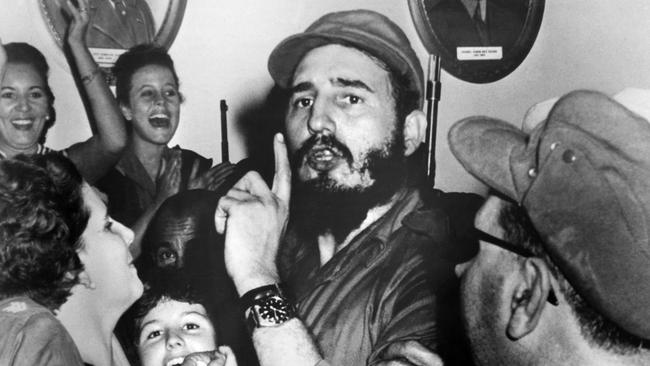US relations with Cuba have never been sweet
A 50-year quarrel between the US and Cuba is finally thawing but tensions between the two neighbours date back to colonial times.

Today in History
Don't miss out on the headlines from Today in History. Followed categories will be added to My News.
Half a century after the US broke diplomatic ties with Cuba, US President Barack Obama has moved to restore relations with the communist country and to end the virtual Cold War that has existed between them since the early 60s.
Obama and Cuban President Raul Castro have spoken and prisoners have been exchanged, in a move which Pope Francis helped broker.
America cut ties and imposed a trade embargo in 1960 and in 1961 withdrew its recognition of the Cuban government, severing diplomatic ties after communist leader Fidel Castro came to power and began nationalising American companies in Cuba.
The enmity with the US has deep roots that go back to colonial struggles over the island. Before the 15th century the island had been inhabited by the Ciboney and Guanahatabey peoples in western Cuba, and the Taino, the largest ethnic group, in the east.
In 1492 Genoese explorer Christopher Columbus, on a Spanish- sponsored expedition, claimed the island for Spain and in 1511 the first Spanish colonists arrived to bring an end to the peaceful existence of the native Cubans.
The Spanish brought with them African slaves but they also imposed a form of feudal slavery on the natives with the encomienda system, giving colonists authority over the natives of a given area and freedom to extract tribute or use their labour.
Introduced European diseases depleted the native population by the beginning of the 16th century causing the encomienda system to break down. Over the course of the 17th-19th centuries Cuba was subject to natural disasters, slave rebellions, pirate attacks and the occasional attempt by other colonial powers to capture the island.
Despite the setbacks, the island began to thrive, with sugar becoming the most important crop. By 1860 it was producing a third of the world’s sugar. The abolition of slavery by Spanish royal decree in 1886 changed the make-up of Cuban society, causing racial and socio-economic tensions and sparked rebellions against the Spanish who were refusing to grant autonomy to the island.
The US began to take an increasing interest, financially and politically, in Cuba and in 1897 tried to buy the island from the Spanish — as it had done with Louisiana from the French in 1803 and Alaska from the Russians in 1867.
The Americans, incensed by Spanish atrocities against rebels and worried about their investments, sent battleship USS Maine to Havana to protect their interests in Cuba in 1898.
An unexplained explosion aboard the Maine was interpreted as an act of war, with public opinion whipped up by newspapers pushing the US into a war with Spain during which US troops captured Cuba, Puerto Rico and the Philippines. Future president Teddy Roosevelt took part in the war’s most famous battle at San Juan Hill.
The treaty of Paris, which concluded the war, granted Cuba independence but the US installed a military governor in 1899 and continued to occupy the country. They implemented a program of modernising the country working on infrastructure such as roads, bridges and deepening Havana Harbour.
The US granted nominal independence to Cuba in 1902, withdrawing troops but maintaining a base at Guantanamo Bay and retaining the right to intervene in Cuban affairs. In 1906 it reoccupied the country after a rebellion sparked by a disputed election. Power was handed back to the Cubans in 1909, but the US continually tried to pull the strings either ousting corrupt regimes, tacitly backing them or installing them.
The result was that American and other foreign-owned businesses flourished in Cuba, making it one of the strongest Latin American economies. But ordinary Cubans saw few of the benefits. Workers were on paltry wages, disparities between rich and poor grew, there was high unemployment, basic services , such as access to clean water, were lacking and organised crime had invested heavily in local businesses under the protection of the corrupt regime of Fulgencio Batista who had seized power in 1952.
When Batista was ousted on January 1, 1959, by a revolution led by former lawyer turned rebel Fidel Castro, America initially seemed to embrace the new regime as having liberated the country from a tyrant. But as Castro began to dismantle capitalism in Cuba and to nationalise American-owned businesses he incurred the wrath of the US.
The seizure of American assets provoked president Dwight Eisen-hower into imposing a trade embargo in October 1960, followed by a break in relations on January 3, 1961. By then Eisenhower had set in motion a plan to train Cuban exiles to invade Cuba, which would be inherited by president John Kennedy and would precipitate the Cuban missile crisis. Relations have remained tense until now.
troy.lennon@news.com.au


